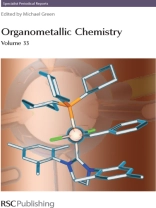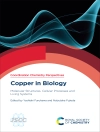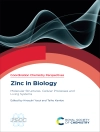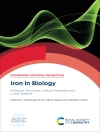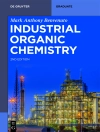Organometallic chemistry is an interdisciplinary science which continues to grow at a rapid pace. Although there is continued interest in synthetic and structural studies the last decade has seen a growing interest in the potential of organometallic chemistry to provide answers to problems in catalysis synthetic organic chemistry and also in the development of new materials. This Specialist Periodical Report aims to reflect these current interests reviewing progress in theoretical organometallic chemistry, main group chemistry, the lanthanides and all aspects of transition metal chemistry.
Table of Content
Groups 1 and 11: The Alkali and Coinage Metals; 1 Alkali Metals; 1.1 Introduction; 1.2 Alkyl Derivatives; 1.3 Alkenyl, Allyl, Vinyl, Alkynyl and Related Derivatives; 1.4 Aryl Derivatives; 1.5 Cyclopentadienyl and Related Derivatives; 2 Copper, Silver and Gold; 2.1 Introduction; 2.2 Copper Compounds; 2.3 Silver Compounds; 2.4 Gold Compounds; References; Group 2 (Be-Ba) and Group 12 (Zn-Hg); 1 Scope and Organisation of the Review; 2 Group 2; 3 Group 12; References; Scandium, Yttrium and the Lanthanides; 1 Introduction; 2 Hydrocarbyls of Various Kinds; 3 Half Sandwich Cyclopentadienyl Complexes; 4 Metallocene Derivatives; 5 Ansa Metallocene Ligand Chemistry; 6 Indenyl and Fluorenyl Complexes; 7 Functionalized Cyclopentadienyls and Related Ligands; 7.1 Functional Groups with Nitrogen Donors; 7.2 Functional Groups with Group 16 Donors; 8 Hydride Complexes; 9 Allyls; 10 Cyclo-Octatetraenyl Complexes; 11 Nitrogen-Donor Ancillaries; 11.1 Ketiminate Chemistry; 11.2 Amido Ancillary Groups; 12 Organophosphorus Supporting Ligands; 13 Aryloxide Ancillaries; 14 Compounds with Boron-Based Ligands; 15 Materials Chemistry; 16 Applications in Organic Synthesis; 16.1 Stoichiometric Reactions; 16.2 Catalysis; 17 Polymerization Catalysis; 17.1 Neutral Olefins and Dienes; 17.2 Acrylate and Polar Monomer Polymerization; 18 Theoretical and Computational Studies; 18.1 Structure and Bonding; 18.3 Agostic Interactions; 18.4 Interaction of Small Molecules; 18.5 Calculating Chemical Reactivity; 18.6 Pretend Molecules; 19 Spectroscopic Studies; References; Carboranes, Including Their Metal Complexes; 1 Introduction; 2 Theoretical and Computational Studies; 3 Heteroboranes, Carboranes and Heterocarboranes; 3.1 {B3 and B4}; 3.2 {B8, B9 and B10}; 3.3 {B12}; 3.4 {PCB8}; 3.5 {SB8}; 3.6 {CB6, CB7, CB8, CB9}; 3.7 {CB11}; 3.8 {NC2B7}; 3.9 {As2C2B7}; 3.10 {C2B9}; 3.11 {C2B10}; 3.12 {C2B11}; 4 Metallaboranes and Metallacarboranes; 4.1 {MB3 and MB4}; 4.2 {MB5}; 4.3 {MB6 and MB8}; 4.4 {MCB8}; 4.5 {MCB9}; 4.6 {MCB10}; 4.7 {MC2B4}; 4.8 {C2B8}; 4.9 {MC2B9}; 4.10 {MC2B10}; 4.11 {MPC2B8}; 4.12 {M2C3B8}; 4.13 {exo-C2B9}; 5 Biological Carborane Chemistry and BNCT; 6 Weakly Coordinating Anions and Catalysis; 7 Crystal Engineered Supramolecular and Polymeric (Metalla)carborane Materials; References; Group III – B, Al, Ga, In, Tll; 1 General; 2 Boron; 2.1 B(C6F5)3 and Related Boranes; 2.2 Borate Anions; 2.3 Ligand Systems Based Around a Tri- or Tetra-Coordinate Boron Centre; 2.4 Boron Hydrides; 2.5 Boron-Based Ligand Systems; 2.6 Boratabenzenes and Related Systems; 2.7 Boron-Containing Materials and Sensors; 2.8 Boronic Acids/Esters and Suzuki Type Coupling Reactions; 2.9 Boron Functionalized Cyclopentadienyl Ligands; 2.10 Miscellaneous; 3 Aluminium; 3.1 Hydrides; 3.2 Aluminate Complexes; 3.3 Aluminium Derivatives Containing Bonds to Group 15 Donors; 3.4 Aluminium Derivatives Containing Bonds to Oxygen; 3.5 Aluminium Organometallics in Organic Synthesis; 3.6 Miscellaneous Examples; 4 Gallium; 4.1 Subvalent Gallium Species and Clusters; 4.2 Complexes Containing Subvalent Gallium Species as Ligands; 4.3 Arylgallium Species; 4.4 Gallium Hydrides; 4.5 Gallium Derivatives Containing Bonds to Group 15 or Group 16 Elements; 4.6 Miscellaneous; 5 Indium; 5.1 Subvalent Indium and Indium Clusters; 5.2 Indium Derivatives Containing Bonds to Groups 15 or 16; 5.3 Miscellaneous Examples; 6 Thallium; References; Group 14: Silicon, Germanium, Tin and Lead; 1 Overview; 2 Multiple Bonds in Group 14; 3 Tetrylenes; 4 Radicals, Cations and Anions; 5 Homoaromatics and Other Ring Systems; 6 Pi-Bonded Complexes; 7 Group 14 Organometallics as Ligands at Transition Metal Centres; References; Recent Advances in the Chemistry of Phosphaalkynes: Building Blocks for Novel Organophosphorus Compounds; 1 Introduction; 2 Synthesis of New Phosphaalkynes; 3 Phosphagrignard Reagents and Related Compounds; 4 Synthesis of Four-Membered Rings; 5 Synthesis of Higher Phosphaalkyne Oligomers; 6 Synthesis of Cluster Compounds; 7 Conclusions and Outlook; References; Organo-Transition Metal Cluster Complexes; Abbreviations; 1 Introduction; 2 General Reviews; 3 Spectroscopic Studies; 4 Theory; 5 Structural Studies; 6 High-Nuclearity Clusters; 6.1 Homonuclear High-Nuclearity Clusters; 6.2 Heteronuclear High-Nuclearity Clusters; 7 Group 6; 8 Group 7; 9 Group 8; 9.1 Iron; 9.2 Ruthenium; 9.3 Osmium; 9.4 Mixed-Metal Clusters Containing Only Group 8 Metals; 9.5 Group 8 Clusters in Catalysis; 10 Group 9; 10.1 Cobalt; 10.2 Rhodium; 10.3 Iridium; 10.4 Group 9 Mixed-Metal Clusters; 11 Group 10; 12 Group 11; 13 Mixed-Metal Clusters; 13.1 Group 5; 13.2 Group 6; 13.3 Group 7; 13.4 Group 8; 13.5 Group 9; 13.6 Group 10; 13.7 Clusters Containing Three Different Metals; References; Complexes Containing Metal-Carbon r-Bonds of the Groups Iron, Cobalt and Nickel, Including Carbenes and Carbynes; 1 Introduction; 2 Reviews and Articles of General Interest; 3 Metal-Carbon s-Bonds Involving Group 8, 9 and 10 Metals; 3.1 The Iron Triad; 3.2 The Cobalt Triad; 3.3 The Nickel Triad; 4 Carbene and Carbyne Complexes of Group 8, 9 and 10; References; Organic Aspects of Organometallic Chemistry; 1 Introduction; 2 Methods for C-C Bond Formation; 3 Methods for C-X Bond Formation; 4 Metal Mediated Cyclisation and Cycloisomerisation Reactions; 5 Nicholas and Pauson-Khand Type Reactions; References;
